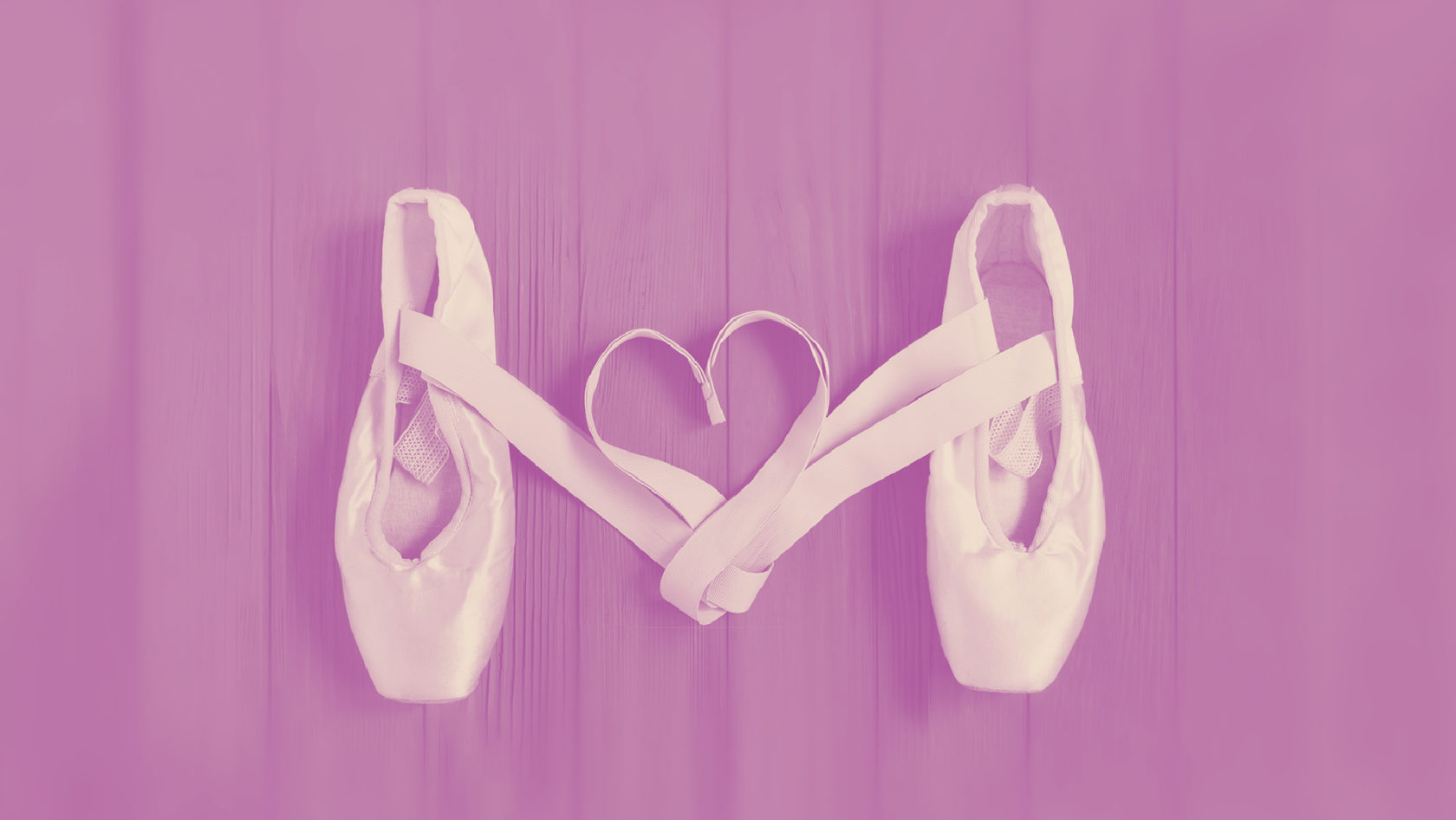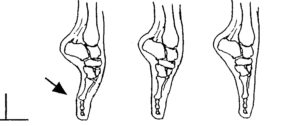 Ballet requires that the dancer spend many years building and shaping the instrument of their art, which is their own physical body. The “Dancer’s Body” comes as a result of long hours of careful training of the muscles. That very beautiful artistic line comes as a result of learning to hold the body in artistically beautiful positions and directions. After enough hours of practice, it becomes automatic. There are no shortcuts! Bodies grow at their own rate, regardless of mental acuity, or natural talent. “Readiness” for the next level of advancement is a very individual matter. Students need to listen to their ballet teacher’s advice on advancement. (See “Recognizing the Student NOT Ready for Pointe”)
Perhaps the most important rule of placement, and one of the more difficult to spot errors in, is that of always maintaining perfect alignment between feet and legs: never should a dancer turn feet out further than he or she has capacity to turn at the hip socket itself. To do so overstretches some very important protective ligaments on the inside of the knee, ankle, and foot, could distort the growth plates, and will likely cause problems in dancing, and in other activities as well.
Ballet requires that the dancer spend many years building and shaping the instrument of their art, which is their own physical body. The “Dancer’s Body” comes as a result of long hours of careful training of the muscles. That very beautiful artistic line comes as a result of learning to hold the body in artistically beautiful positions and directions. After enough hours of practice, it becomes automatic. There are no shortcuts! Bodies grow at their own rate, regardless of mental acuity, or natural talent. “Readiness” for the next level of advancement is a very individual matter. Students need to listen to their ballet teacher’s advice on advancement. (See “Recognizing the Student NOT Ready for Pointe”)
Perhaps the most important rule of placement, and one of the more difficult to spot errors in, is that of always maintaining perfect alignment between feet and legs: never should a dancer turn feet out further than he or she has capacity to turn at the hip socket itself. To do so overstretches some very important protective ligaments on the inside of the knee, ankle, and foot, could distort the growth plates, and will likely cause problems in dancing, and in other activities as well.
Pointe Work Prerequisites
- Minimum age recommended by the Royal Academy of Dance is 12. Younger than 12 or 13, the growth plates in the small joints of the feet are still quite malleable, and permanent damage to the normal use of the foot can result.
- Muscles must be used correctly for the full use of whatever turnout the student has at this time, from the hip socket, not from knee. Or, students should be able to maintain their full individual amount of turnout on all barre exercises.
- Proper coordination of leg segments must be clearly seen in basic allegro movements.
- The first pair of pointe shoes must not be fitted too narrow, or too short.
a) Toes must be able to lay perfectly flat in the pointe shoes when the student stands flat.
b) The student must be able to stand on demi-pointe in the shoes, or nearly so.
c) The student must be able to place the weight correctly on the toes when on pointe. (See #8 and #9 below)
d) There should be no “pressure points” of pain caused by the shoes when standing on pointe or flat. The pressure sensitivity felt on the ends (pads) of the toes will lessen after a few lessons as the toes become used to bearing the body’s weight.
e) Fit the first pair with a set of good quality toe pads. Some teachers choose to add a pair of lightweight anklets over the tights. This allows the shoes to be fitted slightly wider than would be fitted to an advanced dancer, and to still give the needed support while working at the barre.
This wider fitting is very important in the first pair of toe shoes: it allows the muscles and bones and ligaments in and surrounding the arch and toes to increase in strength and bulk during the first three months. (As the feet strengthen and the shoes become tighter, the socks are discarded, then the heavier toe pads replaced with less bulky gel pads.)
5. For the first 12 weekly lessons on pointe, (see “The Twelve Week Rule”) the shoes are to be left at the ballet school, or with the teacher, and worn only a very limited time in each weekly pointe class, very gradually building up, from using them 1-2 minutes the first week to about 6-8 minutes by the 12th. This follows known scientific principles of athletic training. (See “Conditioning Principles to Improve Pointe Work”)
6. The student should ideally also be taking at least one, preferably two, additional ballet classes weekly, with no pointe work.
7. If the feet are uncomfortable, the shoes should be removed.
8. If correct weight placement is carefully learned, and rules of good sense are followed, students should not have difficulty or discomfort with their pointe work. Weight must be on the ends of the pads of the toes, and never on the toenails or knuckles. (See “Weight Placement en Pointe”)
9. High arches will need to dorsiflex at the metatarsal-phalangeal joint in order to get the weight correctly placed on the toes. Arches, ankles and knees must be fully stretched, then the metatarsal joint adjusted so that the toes are perpendicular to the floor.
High arches will take longer to condition for standing on the toes because of the extra strength and flexibility needed to support the higher arch. Be patient! Those beautiful feet will strengthen. It is also recommend to make the parents as aware of the process as possible. Keep them involved and informed and you will have dancers with fewer injuries. Distribute a special letter to the parents (like this one) to fill them in on how the first few weeks of training will go, as well as fitting their first pair of pointe shoes. Related Articles from The Ballet Source:- Weight Placement en Pointe
- Conditioning Principles to Improve Pointe Work
- Is My Student Ready for Pointe?
- Recognizing the Student NOT Ready for Pointe



Comments
Olivia Gilman says
Wow! So much goes into a properly fitting pointe shoe. The coordination of the body, legs, toes, top pads and shoes seems to be a perfectly choreographed dance in and of itself. I like your graphic demonstrating the correct bone placement, with the foot aligned properly. Very interesting. For myself, a confirmed non-dancer, this seems like an impossibility. Oh, the wonders of the human body.
Miss Haley says
this is awesome! thank you!
Add Comment